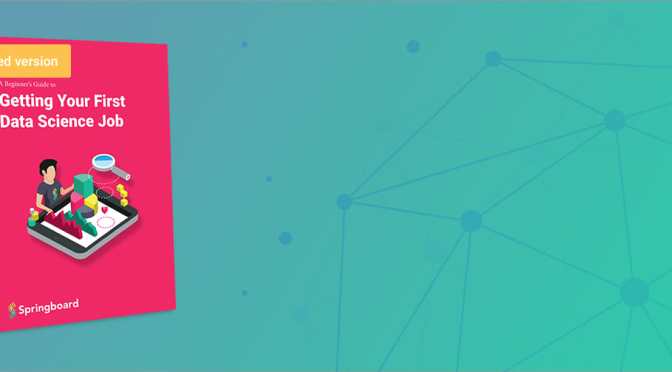摘要: Getting your first data science job might be challenging, but it’s possible to achieve this goal with the right resources.

Getting your first data science job might be challenging, but it’s possible to achieve this goal with the right resources.
Before jumping into a data science career, there are a few questions you should be able to answer:
How do you break into the profession?
What skills do you need to become a data scientist?
Where are the best data science jobs?
First, it’s important to understand what data science is. To do data science, you have to be able to process large datasets and utilize programming, math, and technical communication skills. You also need to have a sense of intellectual curiosity to understand the world through data. To help complete the picture around data science, let’s dive into the different roles within data science.
The Different Data Science Roles
Data science teams come together to solve some of the hardest data problems an organization might face. Each individual of the team will have a different part of the skill set required to complete a project from end to end.
Data Scientists
Data scientists are the bridge between programming and algorithmic thinking. A data scientist can run a project from end-to-end. They can clean large amounts of data, explore data sets to find trends, build predictive models, and create a story around their findings.
Data Analysts
Data analysts sift through data and provide helpful reports and visualizations. You can think of this role as the first step on the way to a job as a data scientist or as a career path in of itself.
Data Engineers
Data engineers typically handle large amounts of data and lay the groundwork for data scientists to do their jobs effectively. They are responsible for managing database systems, scaling data architecture to multiple servers, and writing complex queries to sift through the data.
The Data Science Process
Now that you have a general understanding of the different roles within data science, you might be asking yourself “what do data scientists actually do?”
Data scientists can appear to be wizards who pull out their crystal balls (MacBook Pros), chant a bunch of mumbo-jumbo (machine learning, random forests, deep networks, Bayesian posteriors) and produce amazingly detailed predictions of what the future will hold.
Data science isn’t magic mumbo-jumbo though, and the more precise we get about to clarify this, the better. The power of data science comes from a deep understanding of statistics,algorithms, programming, and communication skills.
More importantly, data science is about applying these skill sets in a disciplined and systematic manner. We apply these skill sets via the data science process. Let’s look at the data science process broken down into 6 steps.
Step 1: Frame the problem
Before you can start solving a problem, you need to ask the right questions so you can frame the problem.
Step 2: Collect the raw data needed for your problem
Now, you should think through what raw data you need to solve your problem and find ways to get that data.
Step 3: Process the data for analysis
After you collect the data, you’ll need to begin processing it and checking for common errors that could corrupt your analysis.
Step 4: Explore the data
Once you have finished cleaning your data, you can start looking into it to find useful patterns.
Step 5: Perform in-depth analysis
Now, you will be applying your statistical, mathematical and technological knowledge to find every insight you can in the data.
Step 6: Communicate the results of the analysis
The last step in the data science process is presenting your insights in an elegant manner. Make sure your audience knows exactly what you found.
If you worked as a data scientist, you would apply this process to your work every day.
What’s next?
Before you jump into data science and working through the data science process, there are some things you need to learn to become a data scientist.
Most data scientists use a combination of skills every day. Among the skills necessary to become a data scientist include an analytical mindset, mathematics, data visualization, and business knowledge, just to name a few.
In addition to having the skills, you’ll need to then learn how to use the modern data science tools. Hadoop, SQL, Python, R, Excel are some of the tools you’ll need to be familiar using. Each tool plays a different role in the data science process.
轉貼自: Data Science 101
若喜歡本文,請關注我們的臉書 Please Like our Facebook Page: Big Data In Finance


留下你的回應
以訪客張貼回應